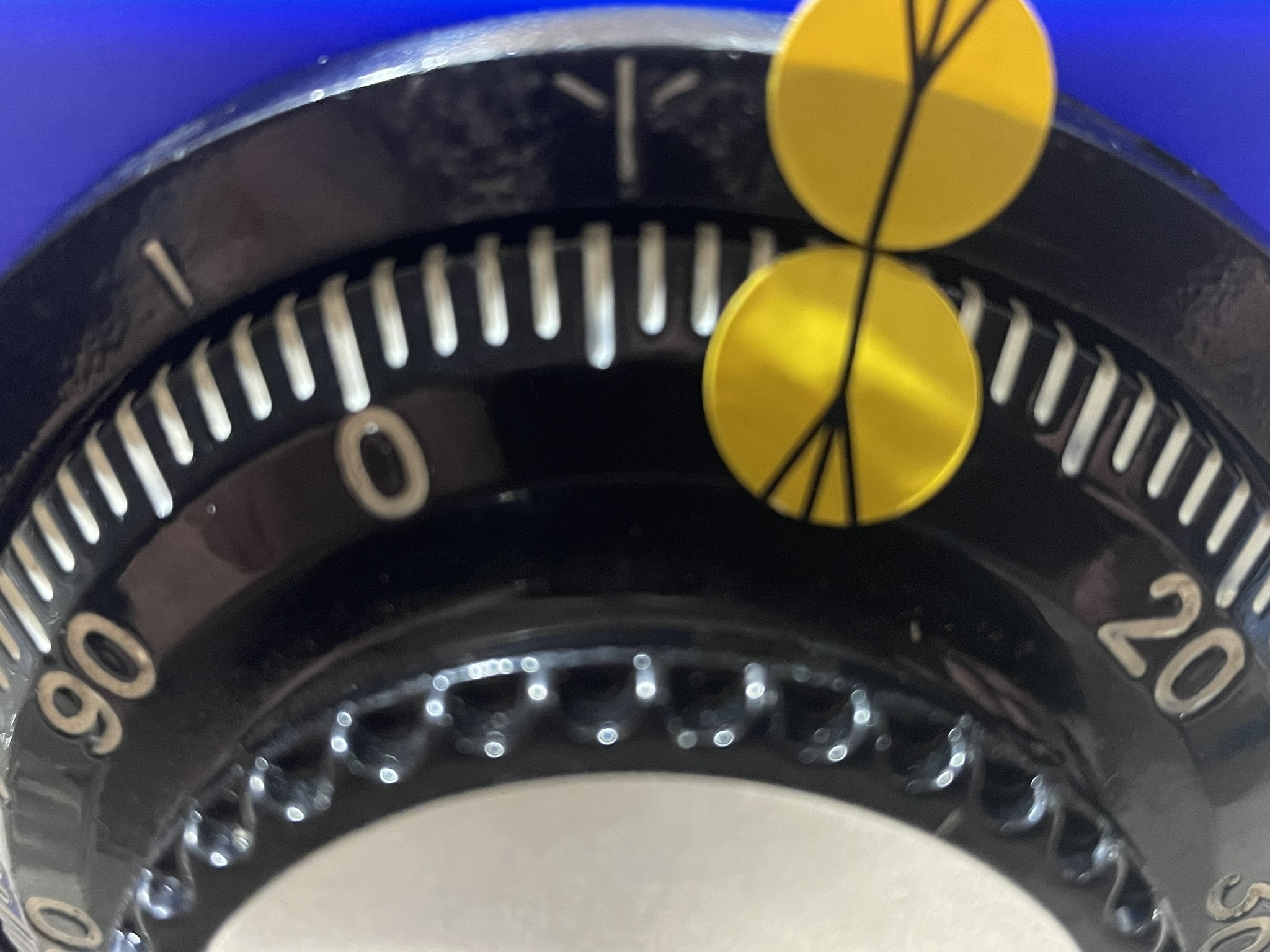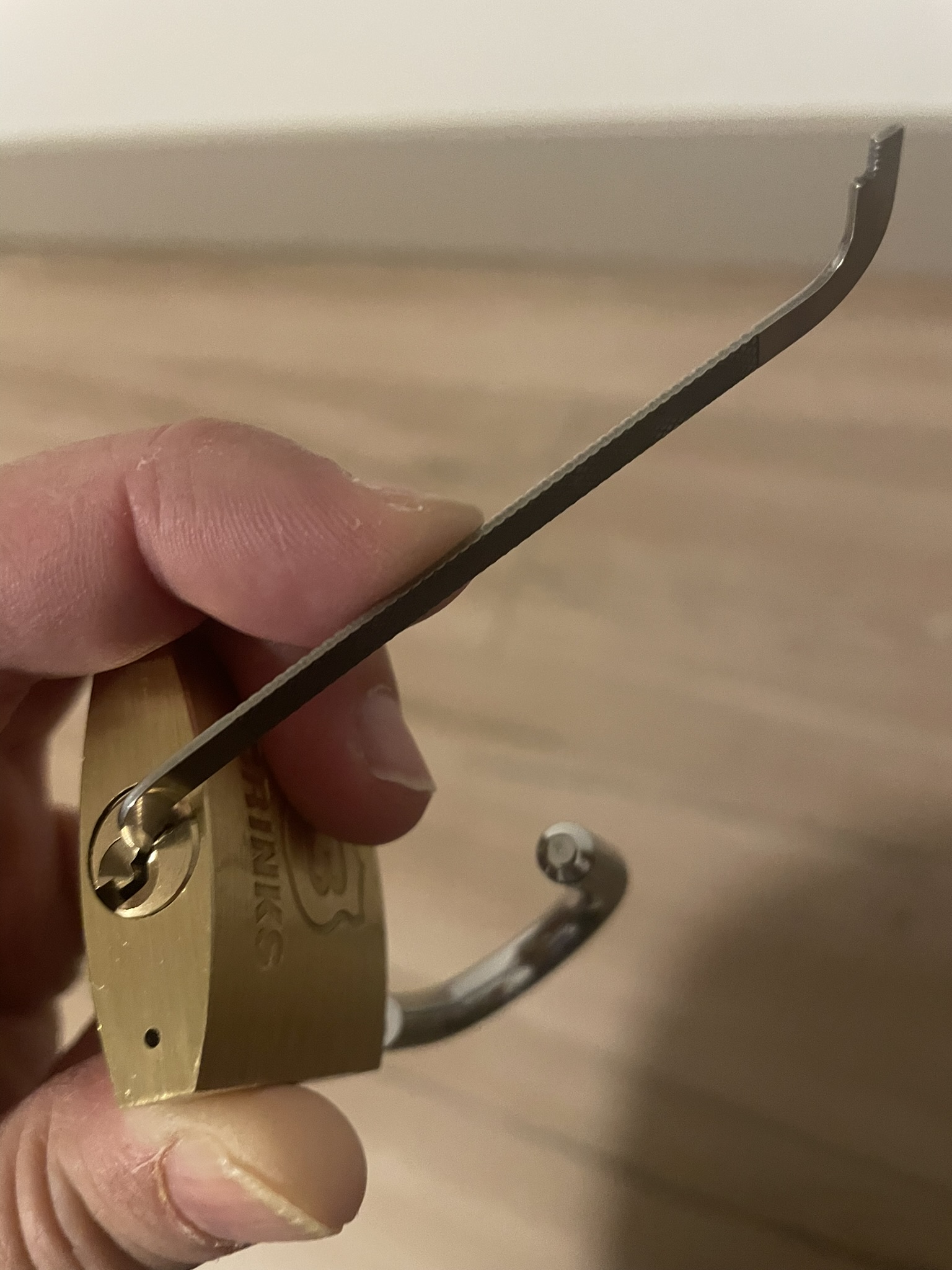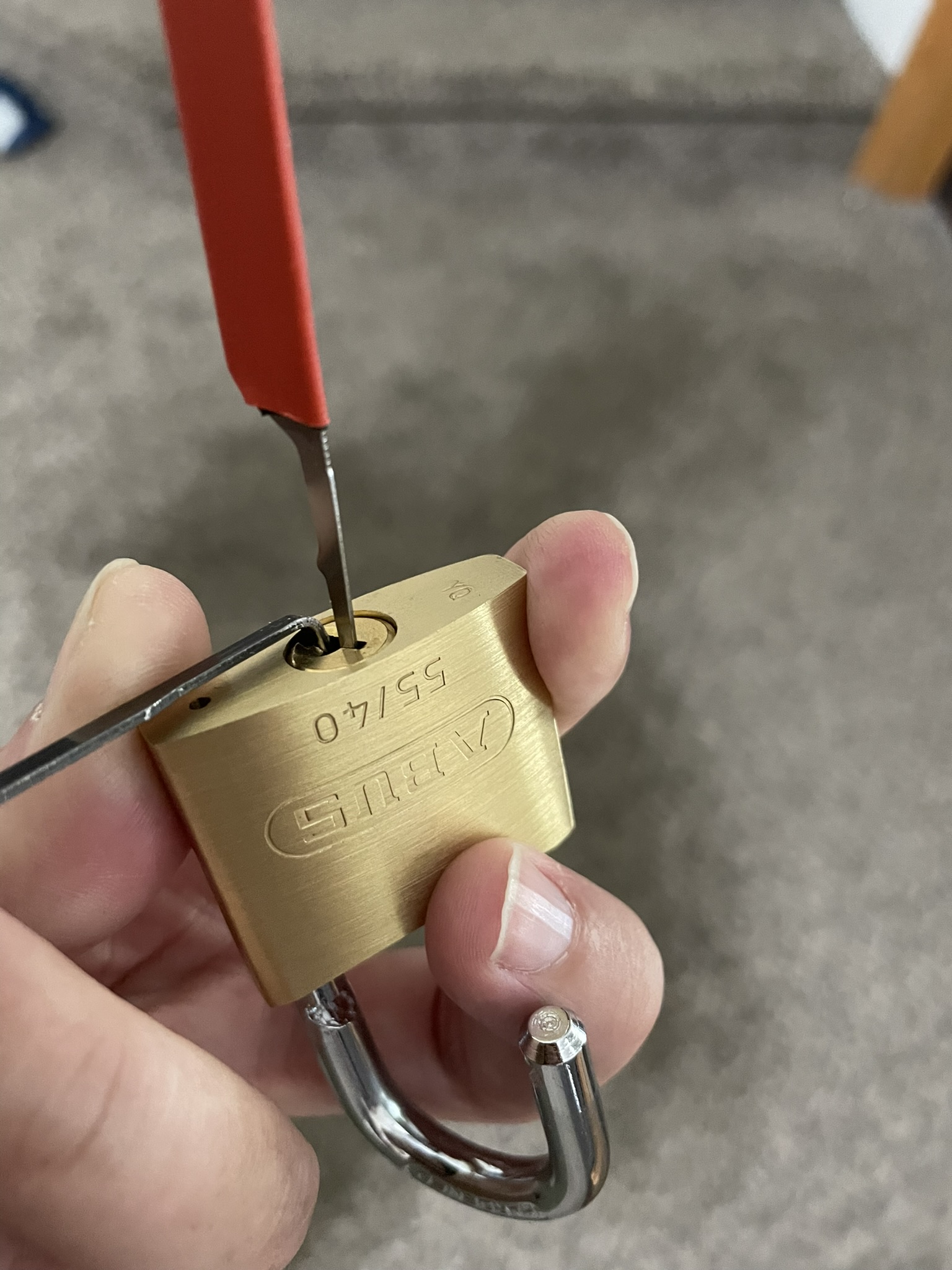Simplified Manipulation of Sargent & Greenleaf R6730
This is the method that I used to open a high-quality mechanical combination lock on a good gun safe in less than an hour without damage and almost without tools.
tl;dr – Soft fingers can open hard locks. The right contact point is more useful than the left. Stickers are faster than graphs.
Overview
I opened this S&G R6730 lock by “manipulation”, with the aid of a fancy amplifier. The amp wasn’t really needed to detect the contact points, which were easy to feel. But it did turn out to help a great deal in stopping people from talking to me so I could focus on my task, so I kept it in my ears.
JARGON ALERT! This is not an introduction to safecracking, it’s an advanced commentary. For a good introduction, see TNL’s Guide to Manipulation.
Locks like this are often manipulated with the aid of several graphs on paper, detailing all variations in left and right contact points for every trial combination. My first successful manipulation of an R6730 came after four and a half hours drawing five pages of graphs. As useful as that can be in training, it also makes the process longer and a bit tedious. When dealing with a lock type that I’m already familiar with, I find the following alternative much faster. I prefer to deal only with the right contact point and to use a simplified progress-tracking system.
My reason for preferring the right contact point is this: The notch in this lock’s drive cam, being shallowly ramped on the right and more abrupt on the left, presents a very measurable leftward movement of the right contact as we get closer to the correct combination, usually much moreso than any rightward movement of the left contact.
As for other simplifications to the progress-tracking system, I do away with the graphing. Instead I fasten a pair of hairline-index stickers to the dial and dial ring. Then I track my progress with a series of notes and iterative realignment of the stickers.
 Stickers in Action
Stickers in Action
With the lever nose resting on its right contact point, I place a sticker on the dial somewhere around the one-o’clock position. That position is arbitrary aside from being away from leaving the twelve-o’clock dialing index unobstructed and choosing somewhere easy to see and reach. The other sticker than goes on the dial ring in perfect alignment with that first sticker. The dial-ring sticker is subsequently moved rightward any time a contact point deeper within the drive cam is found, realigning it with the new contact point associated with the new best-so-far combination.
Notes
Here are the notes that I took during this manipulation.
The comments below each note were added afterward to clarify those notes for instructional purposes.
- Started by dialing AWL x, where x is the range from 50 to 90 and from 0 to 40, in increments of 10. The best value of x was 90.
All-wheels-left to 90 produced the narrowest contact area seen so far, so we know that the wheelpack radius under the fence is at a minimum with this combination, compared with all other combinations tried so far.
- Tried 90L-xR-90L, where x is the range from 0 to 80 in increments of 10. The value of x made no difference.
I chose to vary the position of wheel two first while leaving the other two the same, because this conveniently maintains the normal direction of rotation for parking each wheel. We see that the same contact area is produced for all positions of wheel 2, so this wheel doesn’t seem to be in contact with the fence. It won’t be until we find a value for the first or third wheel which reduces that wheel’s radius under the fence. The best combination so far is 90L-90R-90L. Let’s vary a different wheel now. Varying wheel 3 will require the least dialing, so let’s do that one.
- Tried 90L-90R-xL, where x is the same range as before. The best value of x was 0.
The lowest wheelpack radius under the fence that we’ve witnessed so far was with wheel 3 parked at 0L, producing a best-so-far combination of 90L-90R-0L. Let’s move on to varying wheel 1, since we haven’t varied that one on its own yet.
- Tried xL-90R-0L, where x is the range from 0 to 80 in increments of 10. The best value of x was 80.
The lowest wheelpack radius under the fence that we’ve witnessed so far was with wheel 1 parked at 80L. The best combination so far is 80L-90R-0L. Now let’s vary wheel 3 again, since it’s the quickest to do. Let’s do it in smaller increments this time. Now that we’ve made progress with all wheels, we have a much greater chance of finding a gate that otherwise most likely would’ve been masked by the larger radius of other wheels.
- Tried 80L-90R-xL, where x is the range from 1 to 99 in increments of 2. The best value of x was 7.
The lowest wheelpack radius under the fence that we’ve witnessed so far was with wheel 3 parked at 7L. The best combination so far is 80L-90R-7L. Now let’s vary the position of wheel 2, using slightly larger intervals for now because it’ll otherwise take a lot more time than it did for wheel 3. We’ll come back to this wheel later in smaller intervals if it proves necessary. This isn’t just a gamble, after all there’s a benefit to making progress on all wheels, and often it’s not until we’ve found a very low-radius point on every wheel that we’re able to unmask clear gate indications on any wheel.
- Tried 80L-xR-7L, where x is 95 and the range from 0 to 85 in increments of 5. The best value of x was 65.
The lowest wheelpack radius under the fence that we’ve witnessed so far was with wheel 2 parked at 65R. The best combination so far is 80L-65R-7L.
- Tried 80L-65R-xL, where x is a range starting at 9 and incrementing by 2. Unlocked on 80L-65R-79L.
On 80L-65R-79L, I felt the drive cam engage the fence lever when I turned the dial to the contact area. I then rotated the dial to the right to retract the lock bolt. This unblocked the door’s boltwork, allowing me to retract it with the door handle.
It took me 50 minutes to open this lock, going slowly and methodically to ensure accuracy but not unnecessarily slowed by a tedious textbook-style graphing process. That’s how I like to do it, and it works well for me. Sometimes faster, when nobody bugs me. My record on this type of lock is 25 minutes.
Of course I then reset the combination, because I can’t have you blokes knowing it.

 Brinks & Abus padlocks, picked
Brinks & Abus padlocks, picked